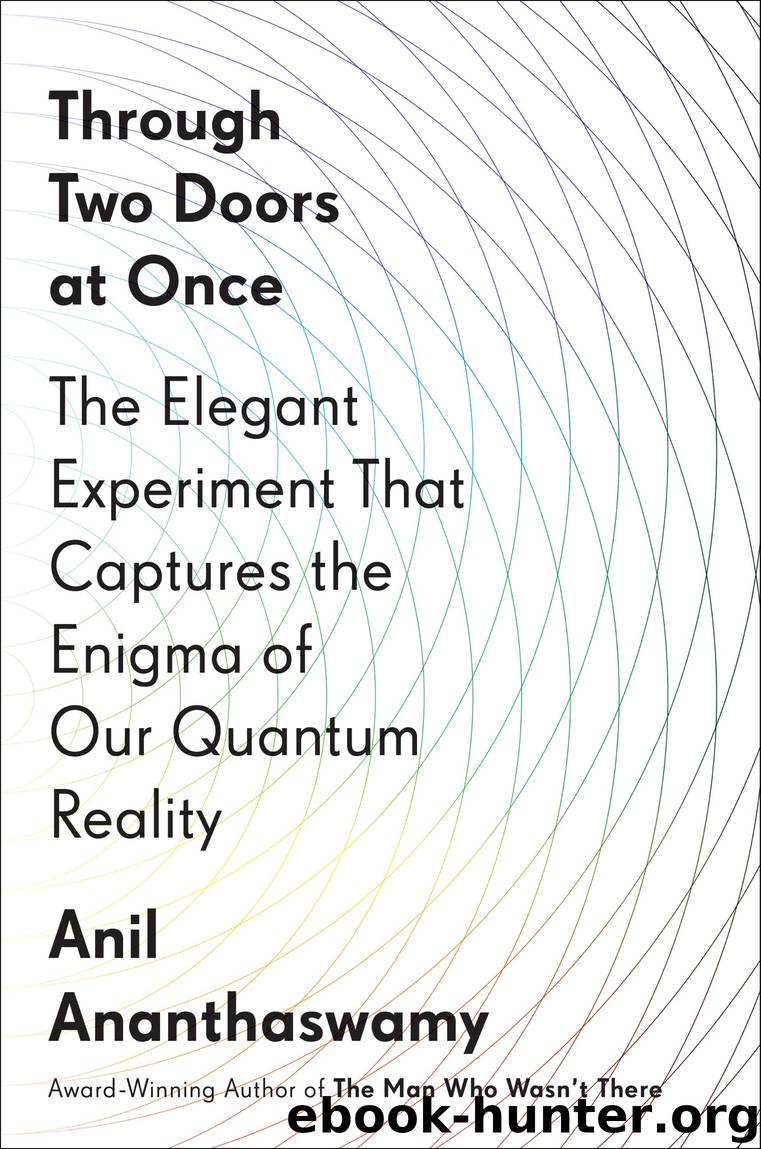Through Two Doors at Once by Anil Ananthaswamy

Author:Anil Ananthaswamy
Language: eng
Format: epub
Publisher: Penguin Random House LLC
Published: 2018-08-06T16:00:00+00:00
* * *
—
Just as Goldstein discovered that his nascent ideas had already been worked out by Bohm, Bohm would discover that his theory wasn’t entirely novel either. Louis de Broglie, the young French prince whom we encountered earlier, had made the first clear attempt at a theory that incorporated both realism and determinism, back in the 1920s. Recall that in 1924, de Broglie came up with the theory that particles of matter such as electrons had wavelike properties. Then in 1927, de Broglie presented another radical idea at the Fifth Solvay Conference in Brussels—that reality is made of particles and that these particles are being guided by a “pilot wave,” which behaves like a wavefunction and evolves according to a form of the Schrödinger equation. So de Broglie was proposing that reality isn’t wave or particle, as Bohr was arguing, but rather it’s wave and particle. At the Solvay meeting, Wolfgang Pauli—who sided with Bohr—ripped into de Broglie’s theory, claiming to point out certain experimental situations that it couldn’t explain. A disheartened de Broglie gave up on the pilot-wave theory, and actually became a supporter of the Copenhagen interpretation.
Until, that is, Bohm entered the picture. Bohm, unaware of de Broglie’s work, had reinvented the theory, but with far greater conceptual and mathematical clarity. Einstein and Pauli both alerted him to de Broglie’s work. Pauli, in particular, raised some of the same issues that he had brought up after de Broglie’s presentation in Brussels. But Bohm, unlike de Broglie, did not back down. He revised his draft to address Pauli’s concerns and sent it to Pauli, who apparently did not read it because it was too long. Bohm wasn’t amused. He sent Pauli a rather stern note: “If I write a paper so ‘short’ that you will read it, then I cannot answer all of your objections. If I answer all of your objections, then the paper will be too ‘long’ for you to read. I really think that it is your duty to read these papers carefully.”
As for giving de Broglie his due, Bohm did so somewhat reluctantly. In his 1952 paper, he acknowledged that he had been alerted to de Broglie’s work after he had completed his paper, and that de Broglie had abandoned his approach following criticism from Pauli and after de Broglie had himself realized what he took to be some of the theory’s shortcomings. “All of the objections of de Broglie and Pauli could have been met if only de Broglie had carried his ideas to their logical conclusion,” wrote Bohm.
He put this argument rather more colorfully in a letter to Pauli: “If one man finds a diamond and then throws it away because he falsely concludes that it is a valueless stone, and if this stone is later found by another man who recognizes its true value, would you not say that the stone belongs to the second man? I think the same applies to this interpretation of the quantum theory.”
To Bohm’s credit, he did
Download
This site does not store any files on its server. We only index and link to content provided by other sites. Please contact the content providers to delete copyright contents if any and email us, we'll remove relevant links or contents immediately.
The Complete Stick Figure Physics Tutorials by Allen Sarah(7334)
Secrets of Antigravity Propulsion: Tesla, UFOs, and Classified Aerospace Technology by Ph.D. Paul A. Laviolette(5330)
Thing Explainer by Randall Munroe(3905)
The River of Consciousness by Oliver Sacks(3570)
The Order of Time by Carlo Rovelli(3162)
How To by Randall Munroe(3074)
A Brief History of Time by Stephen Hawking(2990)
I Live in the Future & Here's How It Works by Nick Bilton(2957)
What If?: Serious Scientific Answers to Absurd Hypothetical Questions by Randall Munroe(2667)
The Great Unknown by Marcus du Sautoy(2661)
Midnight in Chernobyl by Adam Higginbotham(2515)
Blockchain: Ultimate Step By Step Guide To Understanding Blockchain Technology, Bitcoin Creation, and the future of Money (Novice to Expert) by Keizer Söze(2465)
Networks: An Introduction by Newman Mark(2382)
The Meaning of it All by Richard Feynman(2317)
Easy Electronics by Charles Platt(2307)
The Tao of Physics by Fritjof Capra(2247)
Midnight in Chernobyl: The Untold Story of the World's Greatest Nuclear Disaster by Adam Higginbotham(2195)
When by Daniel H Pink(2098)
Introducing Relativity by Bruce Bassett(2097)
